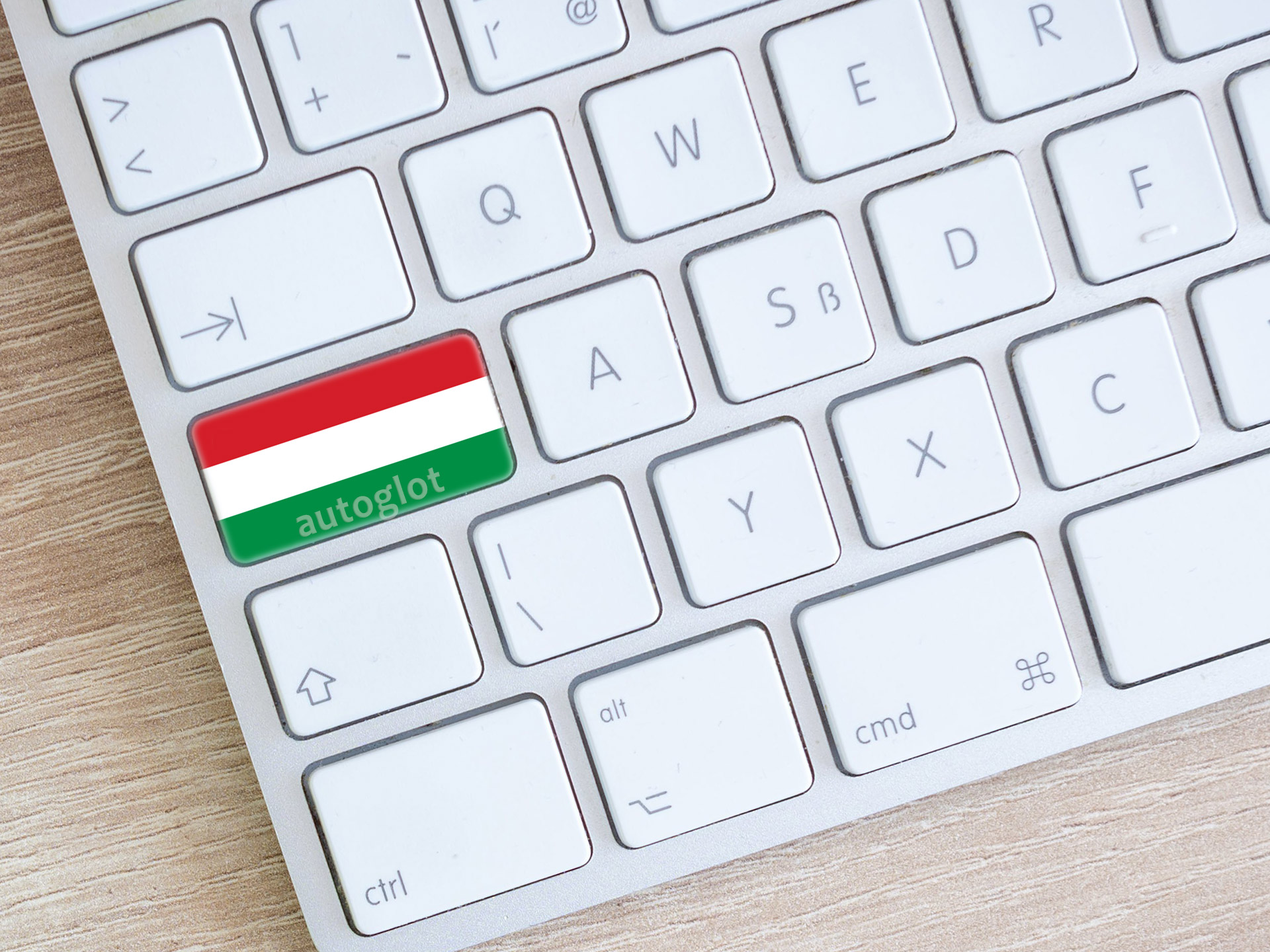
Multilingual websites have become indispensable in our globalized digital landscape, opening doors to diverse audiences and fostering meaningful connections. Among the myriad languages spoken worldwide, Hungarian stands out as a unique and compelling choice for website translation.
Website translation, especially in the context of Hungarian, can boost your online presence and audience engagement in Hungary.
Introduction: Unlocking Global Reach with Multilingual Websites
In an era where the internet serves as a gateway to global communication and commerce, the significance of multilingual websites cannot be overstated. These platforms transcend linguistic barriers, enabling businesses and individuals to connect with audiences across borders. By offering content in multiple languages, websites enhance user experience, increase accessibility, and ultimately broaden their reach.
Importance of Translation to Hungarian
The pivotal role of translation in this landscape is evident. It serves as the bridge that connects diverse cultures, enabling effective communication and comprehension. For businesses eyeing international expansion or seeking to cater to a broader audience, translating their websites is not merely an option but a strategic imperative.
In the realm of website translation, Hungarian emerges as a language that holds immense potential. As we delve into the intricacies of the Hungarian language, its history, and the widespread community of Hungarian speakers, it becomes evident why translating your WordPress site into Hungarian can be a game-changer.
The task of website translation is a fascinating exploration of linguistic diversity, cultural appreciation, and global connectivity. There are numerous nuances of the Hungarian language, based on the demographics of Hungarian-speaking populations, and the significance of having a Hungarian version of your website. Join us on this linguistic voyage as we explore the vibrant world of Hungarian and its transformative impact on your online presence.
Basic Information about Hungarian Language
Hungarian, known as Magyar in its native tongue, belongs to the Finno-Ugric language family, making it distinct from its Indo-European counterparts. It is the official language of Hungary and holds minority status in neighboring countries. Renowned for its rich linguistic heritage, Hungarian presents a fascinating linguistic tapestry for those delving into its intricacies.

History of Hungarian Language
The roots of the Hungarian language can be traced back to the Finno-Ugric tribes that migrated to the Carpathian Basin over a millennium ago. Throughout its evolution, Hungarian has absorbed influences from various cultures, including Turkic, Slavic, and Germanic, shaping its vocabulary and linguistic structure.
Ease of Learning, Speaking, and Understanding Hungarian
While Hungarian might initially appear challenging due to its unique grammar and vocabulary, its phonetic nature can make it more approachable for learners. The language’s agglutinative nature, where affixes are added to a root word to convey meaning, contributes to its distinctiveness. With dedication and practice, mastering Hungarian can be a rewarding linguistic endeavor.
Structure, Vocabulary, and Grammar of Hungarian
Hungarian boasts a grammatical structure that differs significantly from English and other Indo-European languages. Word order is relatively flexible, and the language relies heavily on suffixes to convey nuances. The vocabulary is rich and expressive, reflecting the cultural and historical influences that have shaped Hungary.
Understanding Hungarian grammar involves grasping concepts like vowel harmony, definite and indefinite conjugation, and the absence of grammatical gender. While these elements may pose challenges for learners accustomed to different linguistic structures, they also contribute to the language’s unique charm and character.
In essence, the Hungarian language serves as a testament to the nation’s resilience and cultural identity. Its linguistic complexities mirror the diverse history and influences that have shaped Hungary over centuries.
Population that Speaks Hungarian
The Hungarian language, with its roots deeply embedded in Central Europe, boasts a robust community of speakers. Approximately 13 million people speak Hungarian globally, primarily in Hungary, where it is the official language. Beyond Hungary’s borders, sizable Hungarian-speaking communities exist in neighboring countries such as Romania, Slovakia, Serbia, and Ukraine, reflecting historical ties and shared cultural influences.

Hungarian-speaking Countries
While Hungary is the primary bastion of the Hungarian language, its influence extends beyond national borders. In Romania, for instance, Hungarian holds a co-official status in regions with significant Hungarian-speaking populations. This linguistic diversity contributes to the cultural mosaic of these countries, fostering a sense of identity and heritage among Hungarian speakers.
Countries where Hungarian is an Official Language
Hungarian is recognized as the official language solely in Hungary, where it serves as a unifying force among its diverse population. The language plays a pivotal role in shaping the cultural and national identity of Hungary, contributing to the country’s rich historical narrative.
Countries where People Speak Hungarian
Beyond its official status, Hungarian is spoken by communities in countries like Romania, Slovakia, Serbia, and Ukraine, adding a layer of linguistic diversity to these regions. While not the dominant language in these areas, Hungarian serves as a testament to the historical connections and cultural exchanges that have occurred over centuries.
Understanding the geographical dispersion of Hungarian speakers highlights the language’s relevance in an international context. For businesses and individuals looking to expand their online presence, recognizing the global reach of Hungarian is crucial. Creating a Hungarian version of your website opens doors to a broader audience, encompassing not only Hungary but also the various regions where Hungarian is spoken and appreciated.
How Widespread Hungarian is on the Internet
As the digital landscape continues to evolve, the presence of Hungarian on the internet has become increasingly prominent. While English dominates as a global language online, Hungarian holds a significant place in regional digital spaces. Hungarian-language websites, forums, and social media platforms contribute to a vibrant online community, providing valuable content and fostering connections among Hungarian speakers worldwide.

Why it is Important to Have a Hungarian Version of Your Website
Incorporating a Hungarian version of your website is not merely a matter of linguistic consideration; it’s a strategic move to tap into a burgeoning online audience. The importance of catering to Hungarian speakers lies in the ability to connect with a community that values content presented in their native language. This not only enhances user experience but also establishes a sense of inclusivity, making your website more accessible and engaging for Hungarian-speaking visitors.
The decision to translate your website into Hungarian aligns with the broader trend of businesses recognizing the significance of regional languages in digital communication. As internet users seek content that resonates with their cultural and linguistic preferences, having a Hungarian version of your website positions you to meet the specific needs and expectations of this audience.
The Multifaceted Impact of Hungarian on the Internet
Beyond linguistic considerations, the Hungarian presence on the internet contributes to a dynamic exchange of ideas, cultural expressions, and online commerce. Hungarian-speaking communities actively participate in digital conversations, creating and consuming content across various online platforms. Recognizing and tapping into this digital vibrancy allows businesses and content creators to establish meaningful connections and build a loyal audience within the Hungarian online sphere.
How to Translate a WordPress Site to Hungarian: Navigating the Multilingual Web

Reviewing Major Ways of Translating WordPress Sites to Hungarian
Embarking on the journey of translating your WordPress site into Hungarian involves exploring various methods, each with its advantages and considerations. From manual translation to utilizing automated tools, website owners have several options to cater to their specific needs. However, in the realm of efficiency and seamless integration, automated translation plugins emerge as a standout solution.
Manual Translation: Meticulous but Resource-Intensive
Manual translation involves hiring professional linguists to translate each piece of content. While this ensures a high level of precision and cultural sensitivity, it can be time-consuming and costly. The human touch, however, provides a depth of understanding that automated solutions may struggle to match.
Machine Translation: Rapid but Potentially Imprecise
Machine translation, driven by algorithms, offers speed and scalability. However, the output may lack the finesse required for nuanced content. Errors in context, idiomatic expressions, and cultural nuances are common pitfalls. While cost-effective and quick, machine translation may require additional human editing to enhance accuracy.
Autoglot WordPress Translation Plugin: A Game-Changer for Hungarian Translation
Among the plethora of translation plugins available, Autoglot stands out as a reliable and efficient tool for WordPress website owners. This plugin offers a streamlined approach to translating content into Hungarian automatically, minimizing the manual effort traditionally associated with multilingual website management. Autoglot leverages advanced translation algorithms, ensuring accuracy and coherence in the Hungarian rendition of your website.
Why Autoglot Excels
Autoglot distinguishes itself through its user-friendly interface, making it accessible to both seasoned developers and WordPress novices. The plugin seamlessly integrates into the WordPress dashboard, allowing users to initiate and manage the translation process effortlessly. By automating the translation workflow, Autoglot saves time and resources while maintaining the integrity of your website’s content.
Advantages of Choosing Autoglot
The advantages of opting for Autoglot extend beyond convenience. With Autoglot, website owners can swiftly adapt their content to the linguistic nuances of the Hungarian language, ensuring cultural relevance and resonance with the target audience. The plugin’s real-time translation capabilities keep your website content up-to-date, reflecting changes and updates made on the original site.
Incorporating Autoglot into your WordPress site not only simplifies the translation process but also positions your website to capitalize on the growing online presence of Hungarian speakers.
Source
Step-by-Step Guide to Translating Your WordPress Site to Hungarian with Autoglot
Step 1. Installation and Activation
- Translation of your WordPress site into Hungarian begins with the installation and activation of the Autoglot WordPress translation plugin.
- Navigate to your WordPress dashboard, select “Plugins,” and click on “Add New.”
- Search for “Autoglot,” and once located, click “Install Now.”
- After installation, activate the plugin to integrate it seamlessly into your WordPress site.
You may also download Autoglot directly from the official WordPress plugins repository.
Source
Step 2. Registration in Autoglot Control Panel
- Upon activation, proceed to the Autoglot Control Panel.
- Register for an Autoglot account if you haven’t already.
- The control panel serves as the hub for managing your translation preferences and billing.
- Providing essential information during the registration process ensures a personalized and effective translation experience.
Step 3. Plugin Configuration
- Customize the Autoglot plugin settings to align with your website’s specific needs.
- Navigate to the plugin settings within the WordPress dashboard and fine-tune options such as language switcher, image and media repalcement, and content exclusions.
- The configuration step allows you to tailor the translation process, ensuring optimal results for your Hungarian-speaking audience.
Step 4. Choosing Hungarian Among Languages
- Within the Autoglot settings, designate Hungarian as the target language for translation.
- This step instructs the plugin to automatically translate your website’s content into Hungarian.
- The intuitive interface simplifies the language selection process, making it accessible to users of all technical levels.
Step 5. Checking the Results of Automatic Translation
- With the Autoglot plugin configured and Hungarian selected as the target language, observe the seamless integration of translated content on your WordPress site.
- Navigate through various pages, posts, and elements to ensure accuracy and coherence.
- Autoglot’s advanced algorithms strive to maintain linguistic nuances, providing an authentic experience for Hungarian-speaking visitors.
As you proceed with this step-by-step guide, consider the convenience and efficiency offered by Autoglot in automating the translation process. The plugin’s ability to adapt to the unique features of the Hungarian language ensures a high-quality, contextually relevant translation.
Challenges and Benefits: Translating Your WordPress Site to Hungarian
Challenges of Translating to Hungarian
While the prospect of translating your WordPress site into Hungarian is exciting, it’s essential to acknowledge and address potential challenges. Hungarian, with its unique grammar and linguistic structure, may pose difficulties in achieving a flawless translation. Idiomatic expressions, cultural nuances, and context-specific terminology require careful consideration to ensure the authenticity of the content.
Navigating these challenges is where the Autoglot WordPress translation plugin shines. Its advanced algorithms are designed to comprehend the intricacies of the Hungarian language, providing a reliable and contextually accurate translation. However, periodic human review may still be necessary to fine-tune certain elements and ensure a polished outcome.
Benefits of Translating Your WordPress Site to Hungarian
The benefits of translating your WordPress site into Hungarian are vast, extending beyond overcoming linguistic barriers. By embracing Hungarian, you position your website to resonate with a diverse and vibrant audience. The personalized connection forged through language significantly enhances user experience, fostering trust and loyalty among Hungarian-speaking visitors.
Moreover, catering to the preferences of Hungarian audiences demonstrates cultural sensitivity and inclusivity, establishing your website as a welcoming space for this community. This not only contributes to the expansion of your online reach but also strengthens your brand’s global identity.
Autoglot as Your Translation Companion
In a practical sense, having a Hungarian version of your WordPress site opens doors to new opportunities for online visibility and engagement. Search engines prioritize content in local languages, enhancing the discoverability of your website among Hungarian-speaking users. This strategic approach to multilingual web presence is a powerful tool for businesses and individuals seeking to thrive in the international digital landscape.
This user-friendly WordPress translation plugin not only addresses the linguistic intricacies of Hungarian but also streamlines the entire translation process. By incorporating Autoglot, you empower your website to effortlessly bridge language gaps, ensuring a meaningful and engaging experience for your Hungarian-speaking audience.
Take the leap into the Hungarian digital landscape, where language is the key to unlocking a world of possibilities.
Implementing the insights and steps outlined in this guide positions your WordPress site as a beacon of inclusivity, resonating authentically with Hungarian speakers and fortifying your online presence in this dynamic linguistic sphere.



